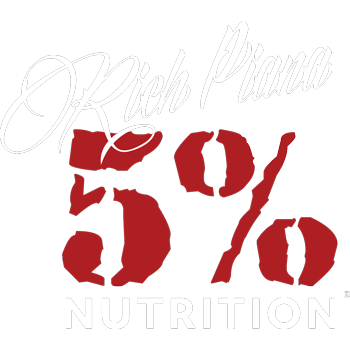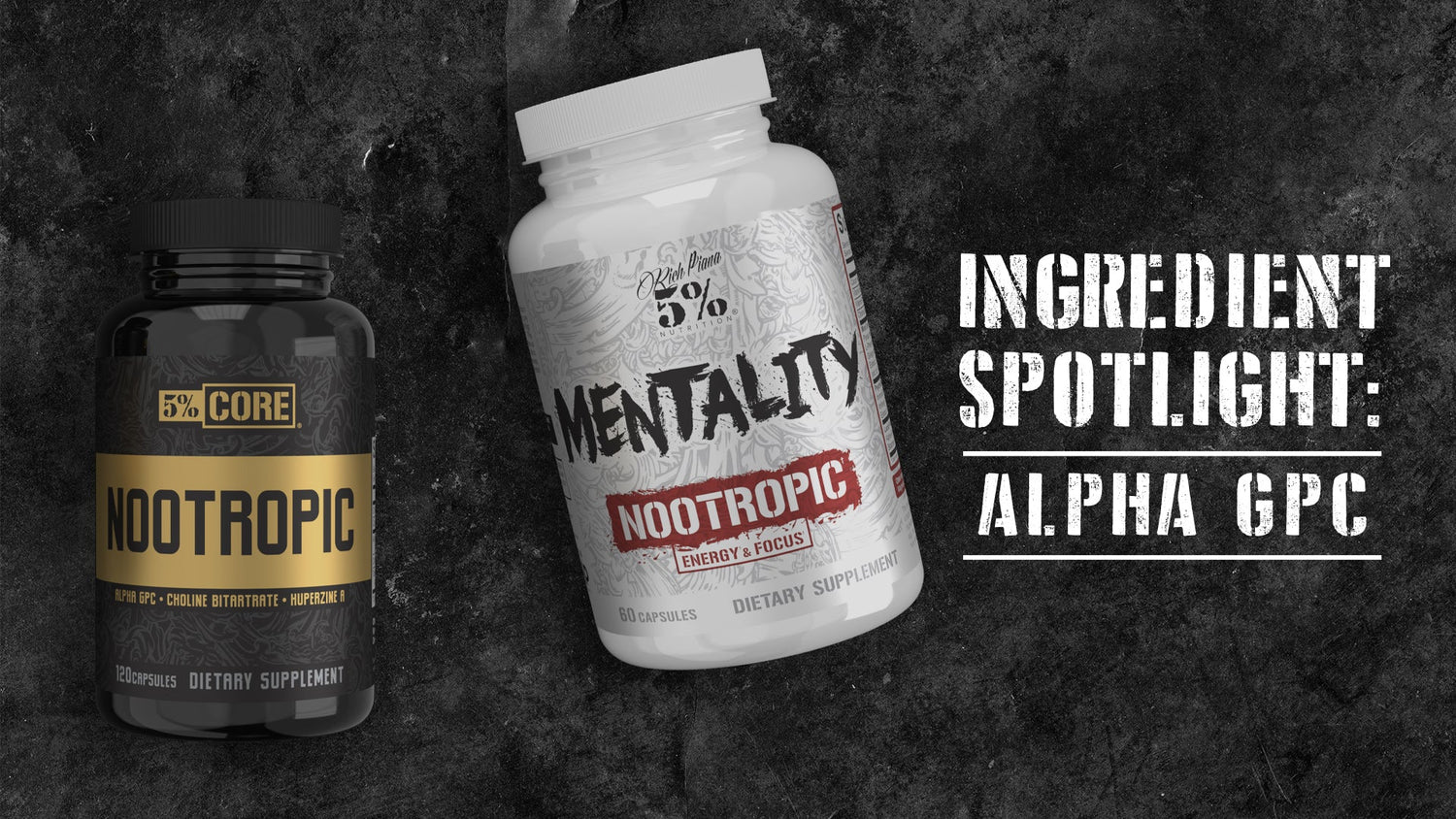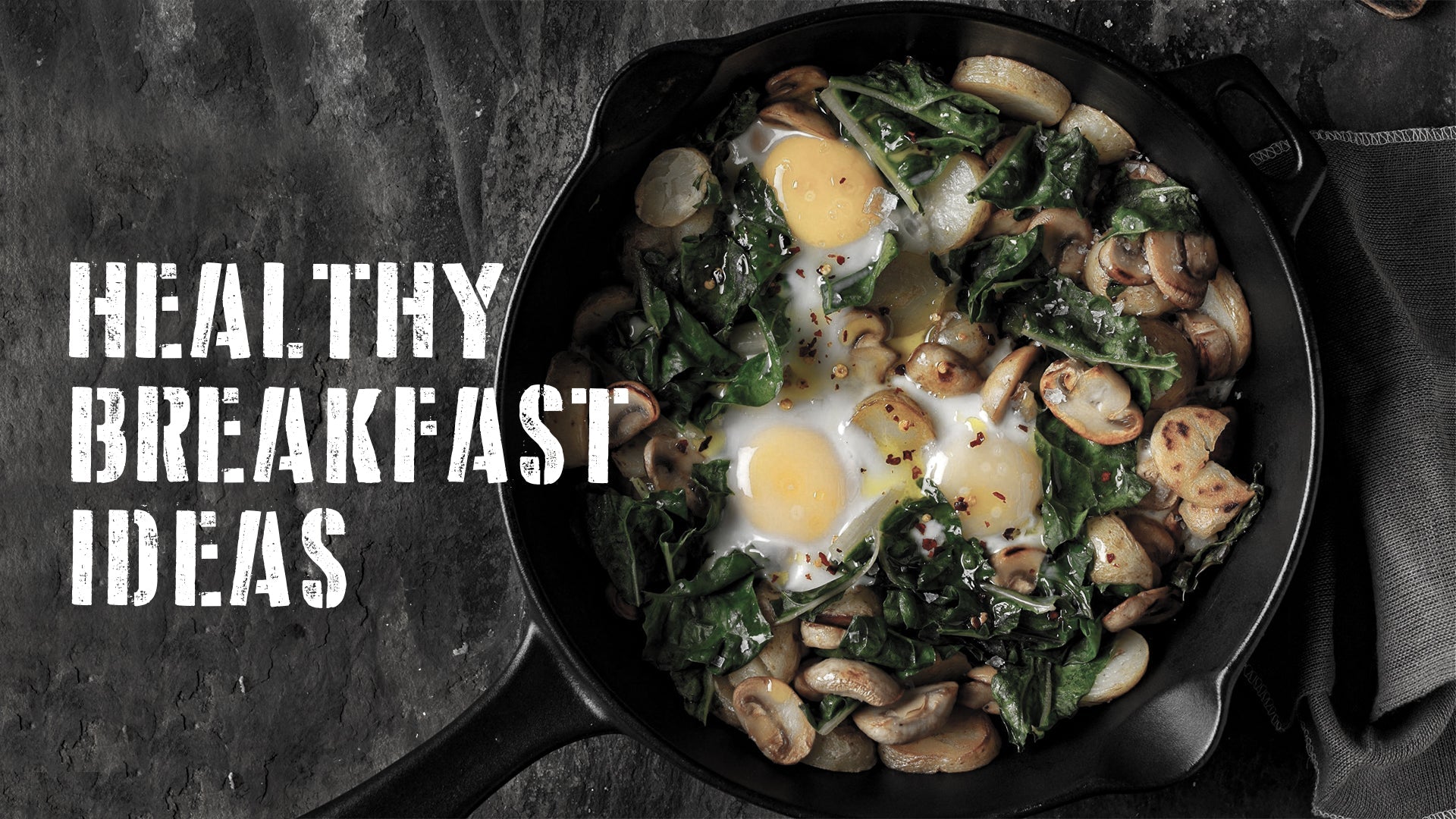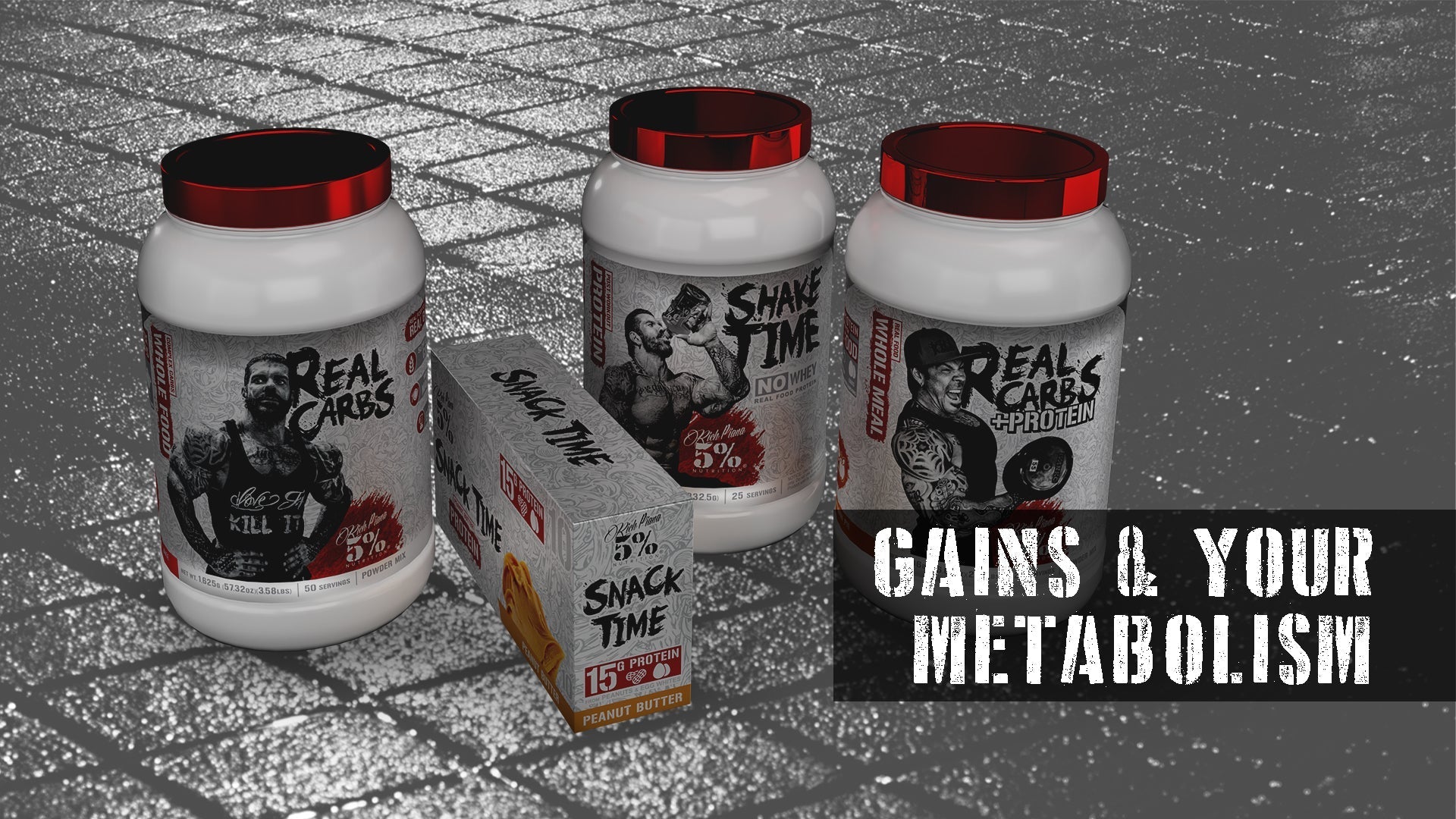Nootropic ingredients have become immensely popular in recent years. In fact, you can find them in many pre-workouts, nootropic formulas, and as standalone products. One of the most effective nootropic ingredients is Alpha GPC. Our new edition, Ingredient Spotlight: Alpha GPC, covers what this ingredient is, what it does, and what 5% Nutrition products you can find it in.
Alpha GPC - What It Is & What It Does
Alpha GPC, also called Alpha-Glyceryl Phosphoryl Choline, is a phospholipid that contains naturally high amounts of choline. This is important because choline is an essential nutrient associated with the B complex vitamin family. It helps maintain cell membranes, and it’s needed to make the neurotransmitter acetylcholine. Often called the “learning” neurotransmitter, acetylcholine plays a key role in regulating brain function and muscle control.(1,2)
The Benefits Of Alpha GPC
- Memory Enhancement
- Improved Cognitive Function
- Acts As A Neuroprotectant
- Increases Strength
- Improves Recovery
The benefits of Alpha GPC are impressive. You can experience improved cognitive function as well as better in-the-gym performance. What could be a better combination than that?(3)
Why Alpha GPC Is Better Than Other Forms Of Choline
In a word, absorption. Alpha GPC is water soluble and can cross the blood-brain barrier. That means it’s absorbed quickly. Many lifters notice effects within an hour. Since Alpha GPC is a concentrated source of choline, your brain becomes saturated with this impressive cognitive enhancer.(3)
In addition, Alpha GPC stimulates the brain’s production of two other important neurotransmitters: Dopamine and Serotonin. Dopamine is considered a “happy” neurotransmitter. That’s because it has a key role in the reward system of the brain. The reward system is a combination of brain processes that control motivation, desire, and cravings. Dopamine is also involved in creating two other neurotransmitters: epinephrine, and norepinephrine. These two are important neurotransmitters with several benefits. These benefits include stimulating the body’s “fight or flight” response, which promotes strength and motivation in the gym. Plus, these neurotransmitters support memory. Finally, Dopamine stimulates growth hormone release.
Serotonin is an inhibitory neurotransmitter. It’s heavily involved in mood, memory, and sleep. Serotonin also plays a role in a wide range of emotions. Sufficient quantities improve mood, ease stress, and lowers anxiety.(4)
What Is The Accepted Dose Of Alpha GPC
The recommended dosage of Alpha GPC is 200 mg up to 600 mg. Dosages up to 1200 mg are considered safe. Higher dosages should be divided into 2-3 servings over the day.
The 5% Nutrition Products That Contain Alpha GPC
5150
Whether you’re using the classic powder or our new 5150 Stick Packs, one serving of our stim-crazy pre-workout provides 200mg of Alpha GPC per serving.
Mentality Nootropic
Our exclusive 258 mg Lucid Focus Neurotransmission Blend features Alpha GPC as the first ingredient.
Core Nootropic
This exceptional product provides 450 mg of Alpha GPC per 2-capsule serving. In support of Alpha GPC, this formula adds 100 mg of regular choline bitartrate, and 100 mcg of Toothed Clubmoss (1%Huperzine A).
Recap
Of course, 5% Nutrition gives you varying dosages of this potent cognitive enhancer. All you have to do is choose the product that best fits your needs, stop by our website and stock up, and enhanced cognitive function can be yours!
References:
- Tayebati, S. K., Tomassoni, D., Nwankwo, I. E., Di Stefano, A., Sozio, P., Cerasa, L. S., & Amenta, F. (2013). Modulation of monoaminergic transporters by choline-containing phospholipids in rat brain. CNS & neurological disorders drug targets, 12(1), 94–103.
- Hollenbeck C. B. (2012). An introduction to the nutrition and metabolism of choline. Central nervous system agents in medicinal chemistry, 12(2), 100–113. https://doi.org/10.2174/187152412800792689
- the-encyclopedia-of-nootropics.pdf (braintropic.com), p.21 - 23.
- Neurotransmitters: Types, functions and disorders | Kenhub













